What Makes a Great Tea Recipe?
A tea recipe is more than just a formula. It’s a personal moment, a daily pause, and in some cases, a cherished ritual passed down through generations. Whether you’re sipping a fragrant Earl Grey in the quiet of morning or blending a creamy matcha latte to keep you going in the afternoon, tea has a way of grounding us in the present.
At its core, a tea recipe simply tells you how to combine water, leaves, and time. But when done well, it becomes a bridge between flavor and feeling, between tradition and creativity. The process can be calming, energizing, or even a little indulgent, depending on what you need in that moment.
This guide will walk you through the full spectrum of tea experiences. You’ll find a tea recipe for every season and every mood, from bubbling milk teas and herbal detox blends to rich green tea lattes and elegant classic brews. If you’ve ever wanted to feel more confident preparing tea or just want to explore new styles, you’re in the right place.
Table of Contents

Tea Recipe Guide: From Earl Grey to Matcha and Wellness Blends
- Total Time: 35 minutes
- Yield: 1 serving 1x
- Diet: Vegetarian
Description
This homemade Bubble Tea mimics the creamy, chewy goodness of your favorite Ding Tea shop, using easy-to-source ingredients. You get that perfect balance of strong tea, sweet milk, and bouncy tapioca pearls, all made fresh in your own kitchen.
Ingredients
½ cup dried tapioca pearls
2 black tea bags (or 2 tsp loose black tea)
1 cup boiling water
½ cup milk or non-dairy milk
2 tbsp brown sugar syrup or simple syrup
Ice, to serve
Instructions
Cook pearls: Boil tapioca pearls according to package (usually 20–30 min). Rinse under cold water.
Brew tea: Steep tea in 1 cup boiling water for 5–7 minutes for a strong base. Let cool.
Assemble: Add cooked pearls to a tall glass. Pour in syrup, ice, tea, then milk.
Mix: Stir well and serve with a wide bubble tea straw.
Notes
Use Thai tea, oolong, or jasmine for variations.
Adjust syrup to taste for more or less sweetness.
Pearls are best consumed within 2 hours of cooking.
- Prep Time: 10 minutes
- Cook Time: 25 minutes
- Category: Beverage
- Method: Boiling
- Cuisine: Taiwanese
Nutrition
- Serving Size: 1 glass
- Calories: 280
- Sugar: 22 g
- Sodium: 40 mg
- Fat: 6 g
- Saturated Fat: 3 g
- Unsaturated Fat: 3 g
- Trans Fat: 0 g
- Carbohydrates: 52 g
- Fiber: 1 g
- Protein: 4 g
- Cholesterol: 10 mg
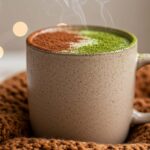
Tea Recipe Guide: From Earl Grey to Matcha and Wellness Blends
- Total Time: 8 minutes
- Yield: 1 serving 1x
- Diet: Vegetarian
Description
This Matcha Chocolate Tea brings together the bold, grassy flavor of matcha and the rich, comforting taste of cocoa. Creamy, slightly bitter, and naturally sweetened, this unique fusion is the perfect alternative to hot chocolate or sugary lattes. Great for chilly mornings or quiet evenings, it’s both energizing and soothing.
Ingredients
1 tsp ceremonial-grade matcha powder
1 tbsp unsweetened cocoa powder
1½ tsp honey or maple syrup (adjust to taste)
¼ cup hot water (not boiling, ~175°F or 80°C)
¾ cup milk or non-dairy milk (oat, almond, or soy work well)
Pinch of sea salt (optional)
Instructions
Whisk powders: In a heatproof mug or bowl, whisk together matcha and cocoa powder.
Add water: Pour in hot water and whisk vigorously until smooth and lump-free.
Heat milk: Warm the milk on the stovetop or microwave until steaming.
Combine: Pour warm milk into the matcha-cocoa mix. Stir or froth.
Sweeten: Add honey or maple syrup. Stir again and enjoy immediately.
Notes
For extra creaminess, blend with a milk frother or handheld blender.
Add a dusting of cinnamon or a few drops of vanilla for depth.
Serve iced by cooling the mixture and pouring over ice.
- Prep Time: 5 minutes
- Cook Time: 3 minutes
- Category: Beverage
- Method: Stovetop / Whisking
- Cuisine: Japanese Fusion
Nutrition
- Serving Size: 1 mug
- Calories: 130
- Sugar: 9 g
- Sodium: 60 mg
- Fat: 5 g
- Saturated Fat: 2 g
- Unsaturated Fat: 3 g
- Trans Fat: 0 g
- Carbohydrates: 17 g
- Fiber: 2 g
- Protein: 4 g
- Cholesterol: 4 g
If you’re just starting your tea journey, there’s no better place to begin than with the timeless elegance of Earl Grey.
Earl Grey Tea: A Citrus-Infused Classic

Few teas are as instantly recognizable as Earl Grey. With its bold black tea foundation and fragrant notes of bergamot orange, this timeless blend offers a balance of richness and brightness in every cup. It’s not just a drink, it’s an experience. Whether you sip it plain, add lemon to enhance the citrus, or pour in a touch of milk to round out the edges, Earl Grey remains a staple for both casual and devoted tea lovers.
Why Earl Grey Stands Out
The bergamot infusion is what makes this tea recipe truly special. It lifts the natural maltiness of black tea with a citrus-floral twist, creating something complex yet comforting. You’ll find Earl Grey at the heart of the beloved London Fog, a creamy tea latte that blends steamed milk, vanilla, and sweetener into a luxurious cup.
Brewing Tips & Custom Ideas
Steeping time, water quality, and temperature all play a role in flavor. From traditional Western-style brewing to smooth cold brews, you can personalize your experience even further with lavender, orange peel, or a cinnamon stick.
👉 Want the full details, brewing techniques, and recipe variations?
Read the Complete Earl Grey & Traditional Tea Brewing Guide »
Once you’ve explored the comfort and tradition of Earl Grey, it’s worth discovering how tea can also nourish your body with detoxifying, health-focused blends.
Homemade Detox Tea: Clean, Simple, Naturally Effective
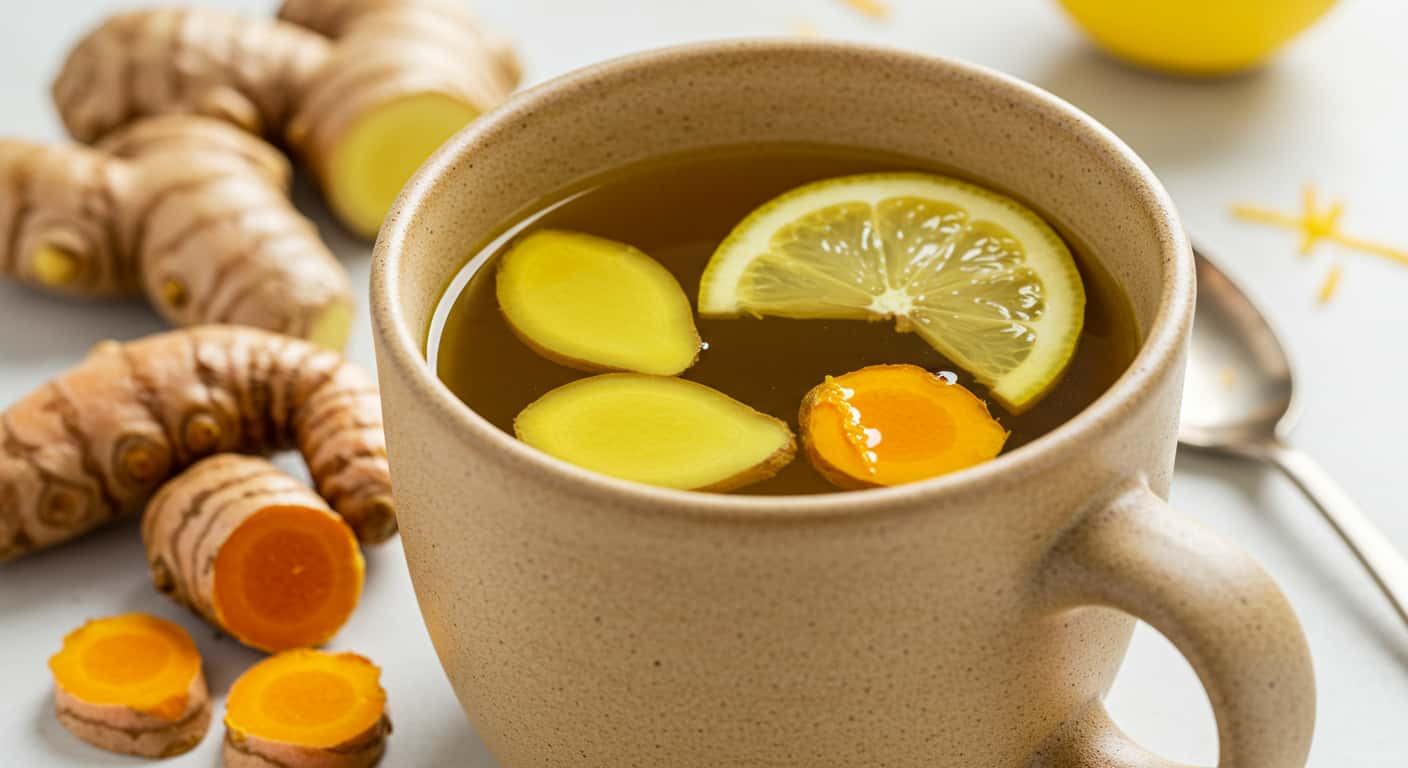
The Homemade Detox Tea from RecipeSlime is a warm, gently spiced blend designed to support digestion, calm inflammation, and help your system reset. It uses ingredients like fresh ginger, lemon juice, and turmeric, each chosen not just for flavor but for their proven functional benefits. This tea recipe is ideal as a morning tonic or a soothing evening drink, especially after heavy meals or stressful days.
Why This Recipe Works
The ginger in this tea helps with nausea and bloating, while turmeric brings anti-inflammatory compounds like curcumin. Lemon adds vitamin C and a cleansing zing, and green tea (if used as a base) contributes antioxidants and a mild energy boost. The combination is balanced, flavorful, and deeply grounding.
“Ginger tea may help relieve digestive discomfort and support gut health by promoting gastric motility and reducing inflammation.”
Cleveland Clinic, 2022 Digestive Health Bulletin
How to Brew It
Bring water to a simmer, then add sliced ginger, turmeric, and lemon. Let it steep for 10 -15 minutes, strain, and sip slowly. You can sweeten it with honey or a splash of apple cider vinegar for extra depth.
👉 Try this calming, gut-friendly blend today:
View the Full Homemade Detox Tea Recipe »
From soothing and restorative, we now shift to something a bit more playful, bubble teas that bring texture, flavor, and fun into your glass.
Bubble Tea & Ding Tea DIY: Café Style at Home
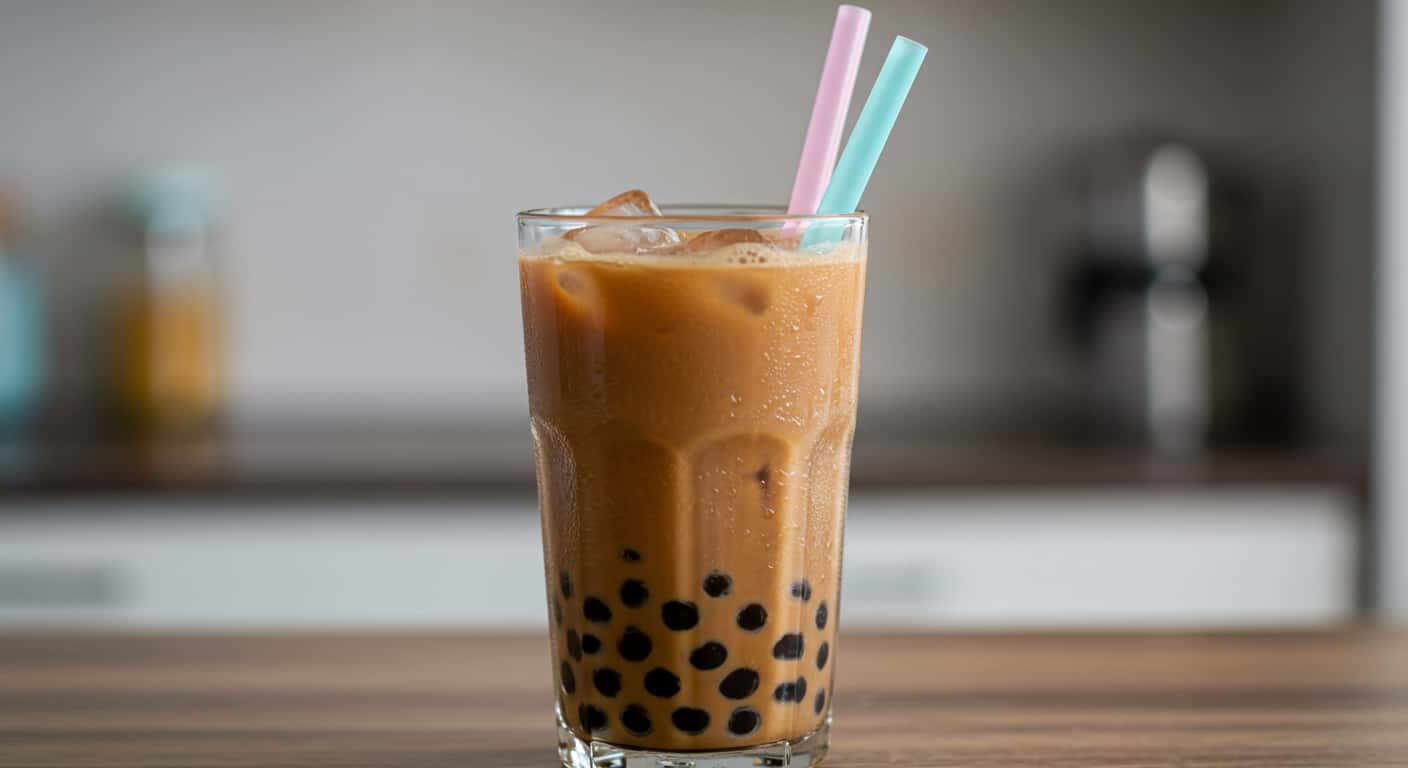
Bubble tea isn’t just a trend, it’s a full-on sensory experience. With its chewy tapioca pearls, milky base, and customizable flavors, it’s easy to see why bubble tea has taken over cafés worldwide. One of the most popular styles is the Ding Tea-inspired version, known for its smooth texture, subtle tea flavors, and creative toppings. Luckily, you don’t need to visit a shop every time the craving hits.
What Makes Ding Tea Bubble Tea Unique
Ding Tea typically uses strong-brewed black tea, non-dairy creamer or milk, and sweet syrups layered over ice and boba pearls. The result is a cold, rich, slightly caramelized drink that’s both refreshing and satisfying. Whether you’re into classic milk tea, Thai tea, or fruity blends, the base method remains flexible.
Make It Your Way
Once you learn how to cook tapioca pearls and build the base, the variations are endless. You can adjust sweetness, try different teas, or even experiment with matcha or coffee infusions.
👉 Want full recipes, sweetener ratios, and boba tips?
Explore the Full Bubble Tea & Ding Tea DIY Guide »
If you’re after calm energy and creamy depth, matcha blends are where focus and indulgence come together in every sip.
Matcha Milk Tea: Classic Comfort, Iced or Hot
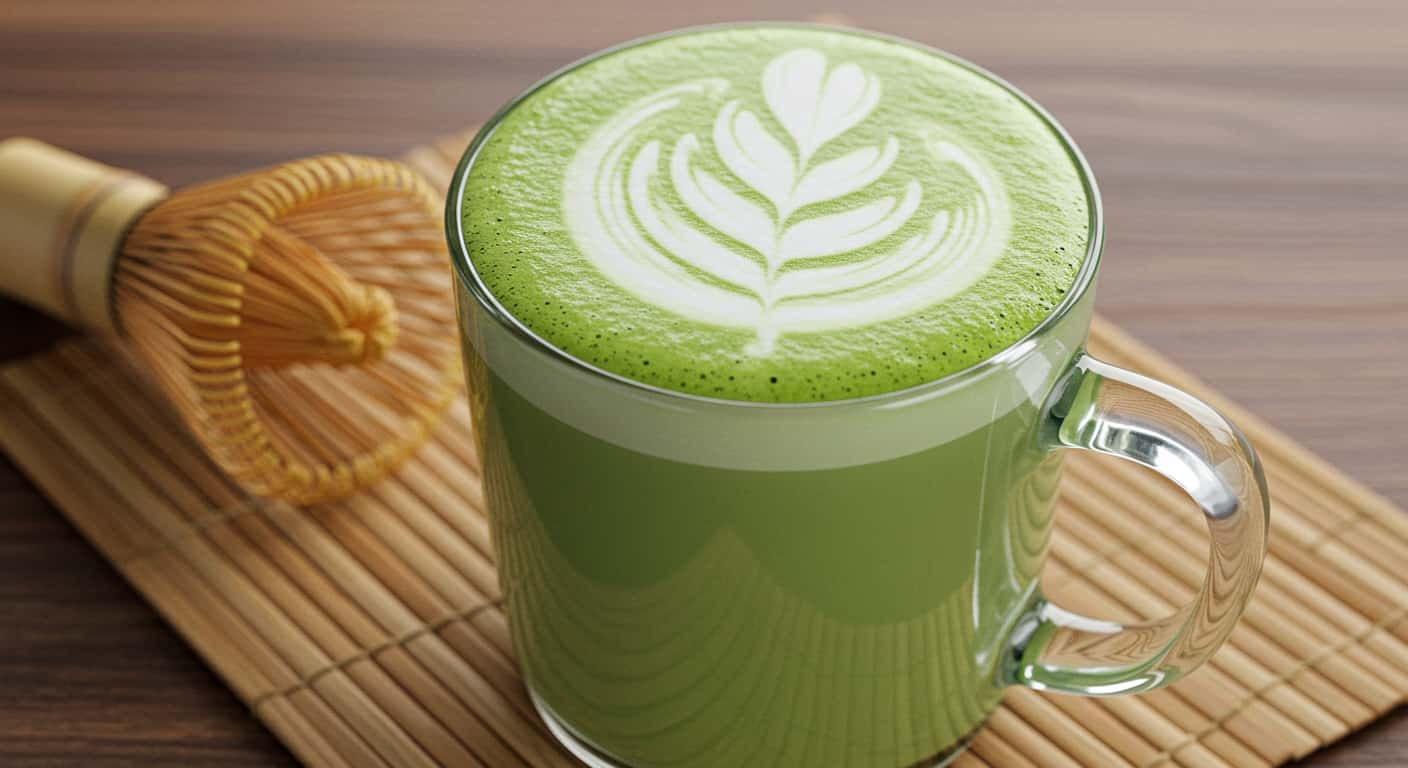
Matcha Milk Tea is the perfect intro to green tea drinks. It blends ceremonial-grade matcha with your choice of milk and just enough sweetener to create a balanced, creamy treat. Served hot or iced, it’s satisfying without being too heavy, earthy but never overwhelming. If you’re a fan of bubble tea, this version often includes tapioca pearls for that chewy, fun texture.
Why It Works
The grassy bitterness of matcha pairs naturally with milk, especially oat or almond, which soften the flavor while enhancing the tea’s richness. This drink is a great afternoon energizer, lower in caffeine than coffee but still strong enough to lift brain fog.
Customizations
Add vanilla for a smooth latte-like taste or use brown sugar syrup if you’re craving a deeper sweetness. Serve it over ice for summer, or keep it hot for colder months.
👉 Try the full recipe and step-by-step instructions:
Make Matcha Milk Tea »
If you’re looking for something bolder and more focused, the Matcha Ninja Latte steps things up with a stronger dose of green energy.
Matcha Ninja Latte: Bold, Focused, Functional
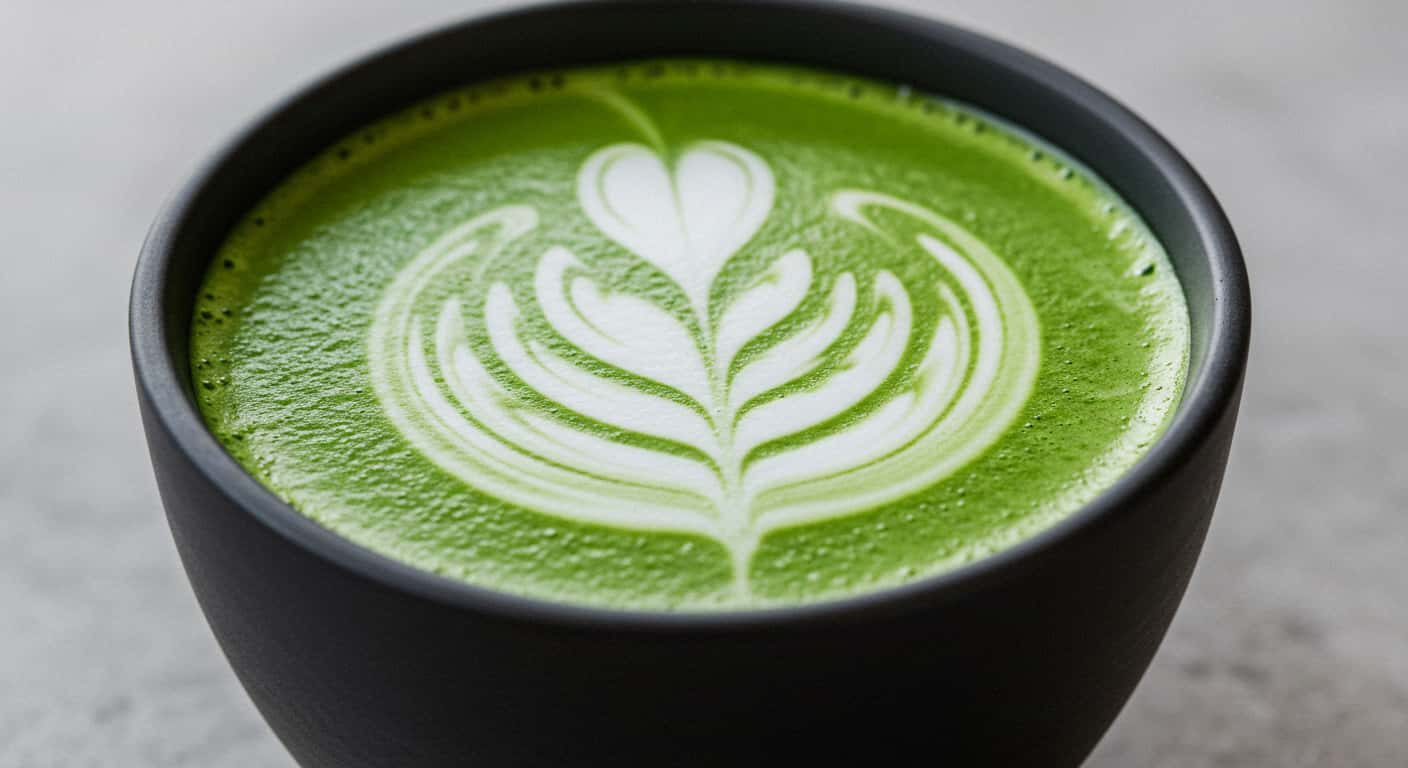
The Matcha Ninja Latte is designed for those who want more intensity from their green tea ritual. Using a higher concentration of matcha than most standard lattes, this drink delivers a stronger energy boost and a deeper flavor profile. It’s ideal for mornings or pre-work sessions where clarity, calm, and caffeine need to meet in the same cup.
Why It’s Different
Unlike other lattes, this one leans into matcha’s slightly bitter notes instead of masking them. The result is something clean, alert, and invigorating. It’s a bold alternative to sugary café matcha blends.
“Matcha provides a more stable energy boost than coffee, thanks to its L-theanine content, which promotes calm alertness.”
Dr. Andrew Weil, Integrative Medicine Specialist
How to Make It
You’ll whisk 2 teaspoons of high-quality matcha into a splash of hot water until frothy, then top it with steamed milk, oat or cashew milk works beautifully here. Add a touch of honey or maple syrup if you like, but this one’s meant to be minimal and pure.
👉 Explore the full method and serving tips:
Make the Matcha Ninja Latte »
But maybe you’re in the mood for something more comforting. That’s where Matcha Chocolate Tea comes in a cozy blend of richness and complexity.
Matcha Chocolate Tea: When Comfort Meets Complexity
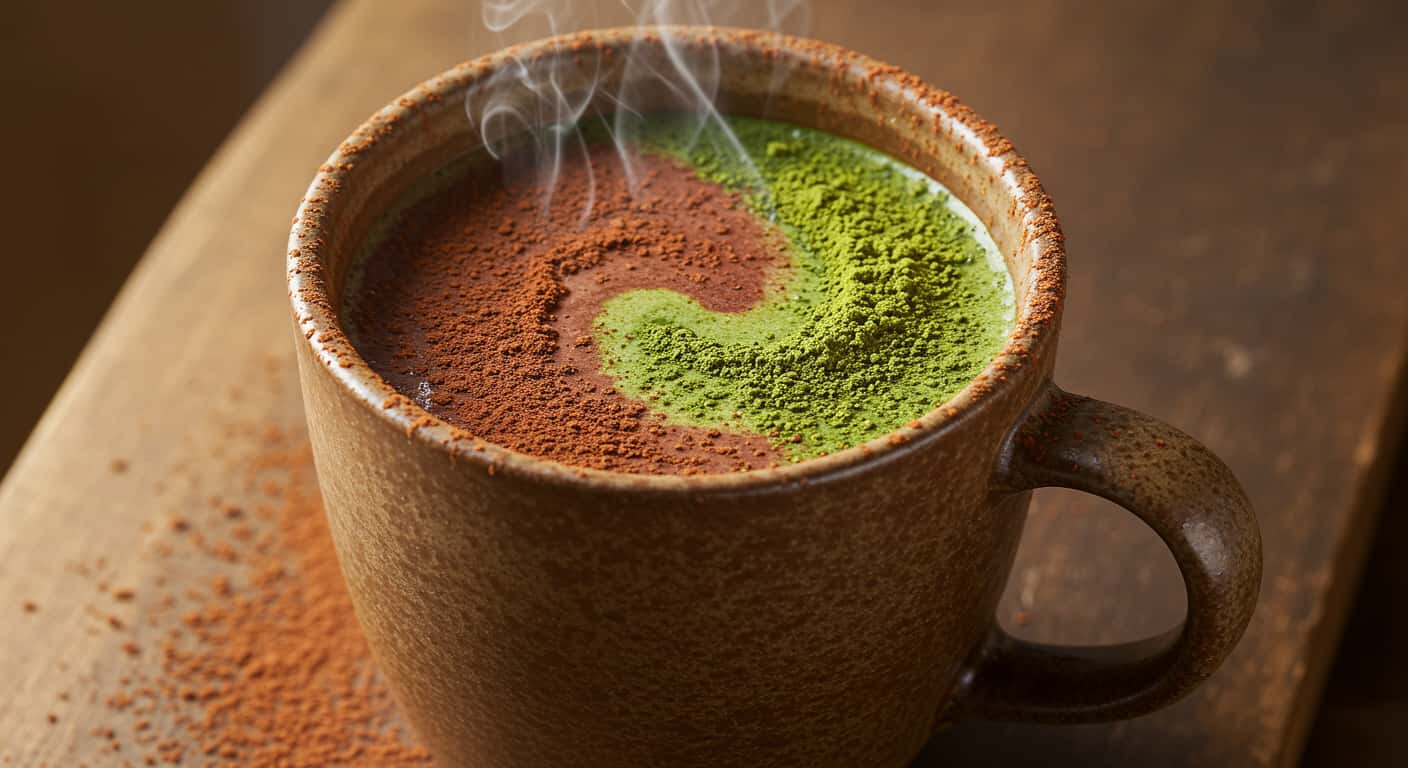
Matcha Chocolate Tea is what happens when earthy matcha meets the velvety richness of cocoa. It’s a satisfying hybrid, part latte, part hot chocolate, all warmth. The pairing creates a smooth, slightly sweet drink with layers of bitterness and creaminess in every sip.
Flavor Notes
Think of it like green tea’s answer to mocha. The matcha brings that clean, almost vegetal brightness, while cocoa powder adds body and warmth. It’s especially good in the cooler months, though iced versions also work if you adjust the milk ratio.
Brew It Right
Use 1 teaspoon of matcha, 1 tablespoon of unsweetened cocoa powder, and hot water to form a paste. Then stir in warm milk and sweetener of choice (honey or brown sugar syrup works best). You can even top it with a dusting of matcha or chocolate shavings.
👉 See full instructions and flavor variations here:
Make Matcha Chocolate Tea »
With the essentials covered, it’s time to let your tea evolve with the seasons through custom blends that reflect your mood and the time of year.
Seasonal & Creative Tea Blends: Sip with the Seasons
Tea doesn’t have to taste the same throughout the year. Just like your clothing changes with the weather, your tea recipes can shift to match the mood of each season. Seasonal tea blends make use of timely ingredients, floral herbs in the spring, bright fruits in summer, cozy spices in fall, and deeper, smoky notes in winter. Each blend can offer not just flavor, but a sense of place and time.
“Tea is a plant-based beverage that contains thousands of bioactive compounds, including polyphenols, which have anti-inflammatory and antioxidant properties.”
Harvard School of Public Health
What to Sip When
- Spring: Choose jasmine green tea, fresh spearmint, or lemon peel to keep things light and fragrant.
- Summer: Go with cold-brewed hibiscus, dried berries, or citrus peel for something refreshing and slightly tart.
- Autumn: Brew black tea with cinnamon, cardamom, or nutmeg for warm, spicy notes.
- Winter: Steep Earl Grey with a splash of vanilla or try lapsang souchong with honey and orange peel for something bold and comforting.
Blend from the Pantry
Making seasonal blends can be simple. Use what you have, dry herbs, tea bases, or spices, to create flavors that suit the moment. Trust your instincts and let your palate guide the mix.
👉 Looking for seasonal recipes and custom ideas?
Explore the Full Seasonal & Creative Tea Blends Guide »
Of course, great tea starts with good tools and techniques. Let’s make sure you’ve got the gear, and the fixes, for your best brew every time.
Essential Tools, Fixes & FAQs: Master Every Tea Recipe
Every great tea recipe depends not just on the ingredients but on the tools and techniques behind it. From kettles and strainers to frothers and timers, the right equipment makes the brewing process smoother and more precise. Whether you’re making a complex matcha drink or a simple herbal infusion, having the right tools helps you repeat the flavor you love, every time.
What You’ll Need
- A reliable kettle with temperature control to avoid burning delicate teas
- A loose-leaf tea strainer or infuser for cleaner, fuller brews
- A milk frother if you’re into lattes or tea recipes that need a creamy finish
- A timer, scale, or measuring spoon to keep your steep consistent
- Optional: a gaiwan or Yixing teapot for traditional methods
Common Tea Troubles (and How to Fix Them)
Bitter tea? You may be over-steeping or using water that’s too hot. Cloudy iced tea often comes from brewing while hot, then chilling too fast. Weak flavor could mean your tea-to-water ratio is off. All of these issues can affect your tea recipe outcome.
Frequently Asked Questions (FAQs)
What is the best tea recipe for beginners?
Start with Earl Grey and a slice of lemon or honey. It’s simple, smooth, and doesn’t need special tools. Green tea with mint or chamomile is also great for beginners.
Can I customize a tea recipe with ingredients I already have?
Yes. Most tea recipes are flexible. Add herbs, spices, or citrus peel based on what you like. Just match the base tea with your flavors, black teas pair well with spices, greens with floral or citrus.
What’s the healthiest tea recipe?
Try blends with ginger, turmeric, lemon, or green tea. These support digestion, reduce inflammation, and offer antioxidants. Look for simple detox or herbal recipes.
Why does my tea taste bitter?
Likely over-steeped or brewed with water that’s too hot. Follow steeping times closely, especially for green and white teas, which are more delicate.
Can I reuse tea leaves in a recipe?
Yes, especially loose leaf. Green, oolong, and pu-erh teas can be re-steeped 2-3 times. Just reduce the steep time with each brew.
Steep Your Own Story
From bold Earl Grey mornings to creamy matcha afternoons and soothing herbal evenings, every tea recipe is a small act of self-care. What you’ve read here isn’t just about how to steep leaves, it’s about finding rituals that support your energy, mood, and sense of connection. Whether you’re exploring seasonal blends or perfecting your bubble tea layering, each cup offers a chance to pause, savor, and reset.
Practical Takeaway
- Use filtered water and accurate steep times to improve taste.
- Adjust ingredients based on mood, season, or health goals.
- Keep a small variety of teas and herbs on hand for flexible recipes.
- Reuse high-quality tea leaves and experiment with cold brews and lattes.
- Most importantly, don’t rush. Brewing is part of the experience.
Your Turn
Have a go-to tea recipe you love? A family trick for the perfect steep? Share your thoughts, tips, or tea questions in the comments. We’d love to hear how you brew.
Standout user-submitted recipes may be featured in future updates, so feel free to drop your best blend ideas or rituals below.
👉 Revisit any cluster above and let your next tea be your best one yet.

